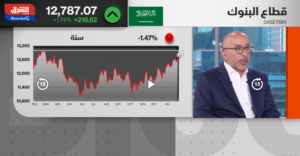That should not be the sole barometer of determining property market’s status
Since the birth of the world wide web, the battle-lines have clearly been drawn.
On one side, we have the young culture of the internet, the forever optimistic, playful and oftentimes (wilfully) inaccurate. On the other, the old guard – precise, polite and with an increasingly paranoid set of priorities. This translates into the world of analysis, where the same set of data gets dissected with differing spins.
-ADVERTISEMENT-
Ads by
One side seeks to define the culture, the other delights in its resistance to regulation and optimism, with both sides looking for the mot juste to describe the zeitgeist. This has played out in every domain of discourse, including real estate, where market watchers have seized on ‘cash-dominated sales’.
In the US, in particular markets they have reached 10-year highs, even as on a national level, markets have started to fall as rising interest rates bite. Interestingly, the narrative of cash-dominated sales tends to cluster in the luxury dominated space, where it makes little financial sense to take on mortgages that are in excess of 7 per cent.
As median prices continue to fall, the focus has narrowed down to branded residences, but in areas like Miami, Naples, and Augusta, where cash sales have dominated, any dip in transactional activity quickly starts to reverberate across sentiment-wise, as it takes longer and longer to close the next deal.
Explaining the offplan surge
The commentary has been one of tight inventory and builders being careful this time around. But all evidence suggests that offplan dominates transactional activity, which beggars belief about the paucity of supply.
In Dubai, recent commentary suggests that dominant cash sales are a healthy sign of the resilience of the overall market. And that the market was never reliant on mortgage activity in the first place. This flies in the face of empirical data, where mortgage activity accounted for more than half of overall sales from 2014-21.
Of course, at that time, the narrative was that this was a sign of a maturing market, moving away from the speculative froth and more towards an end-user dominated ecosystem. As ultra-luxury sales surged in 2022, the metrics flipped, with the rise in values far exceeded the rise in volumes, as money flooded in from all corners of the Earth.
The discourse shifted to “uncoupling” from global markets with the consequent conclusion being that Dubai was impervious to rising interest rates. This too conflicts with empirical data that suggests one of two factors:
Rising “cost of money” acts as an anchor on all asset values; and
Asset values will over the longer term move towards their intrinsic value.
This has been witnessed by the rise in values of mid-income spaces in areas like JVC/Arjan/Majan/International City and increasingly Dubai South. There is always a preference for new-builds, explaining the disconnect in per square foot prices between older and newer construction.
Going for mortgages
Look beneath the surface and there is a rise in secondary market activity in areas like International City (particularly in the retail space) as value investors look for bargains. In the background, the fall in mortgage reliance is explained as prudence on the part of the banks. But for homeownership to rise, mortgage activity will always remain the backbone of the mass market. And the surge in cash transactions will inevitably fall. As it has in other parts of the world such as Canada, and traditional luxury markets like California.
Mortgage reliance implies price moderation, but this is not a negative. Foreclosure activity brings in a new set of buyers as stress in certain households are transferred to newer residents moving into the city. The rise in population masks the underlying activity on the ground, but the fact remains that the focus on the ultra-luxury segment is not indicative of overall market dynamics. This is perhaps why most analysts reluctantly conclude that the market is yet to surpass its previous peak, despite indices now being more concentrated on the luxury segment.
Signs of price moderation
Commentary on the part of the analysts is always one way: things will always go up.
This is the nature of sell-side analysts and the analysis (often iridescent) is laced with funambulistic expressions of optimism. The current surge in real estate pricing in Dubai at the ultra high-end will (or has already) moderate(d).
This is not a bad thing; but for this to translate into commentary that there is a chronic undersupply or alternatively that interest rates do not matter is simply not in touch with ground realities. There is, as there has always been, a hunt for value.
With or without the momentum, the investor/end-user always benefits by looking for that intrinsic value. The rise in activity in areas that have been hitherto ignored (in the ready market) signals growing wisdom and awareness about pricing.
Whatever else the commentary is, this can only be classified as a win.
Sameer Lakhani
The writer is Managing Director of Global Capital Partners





